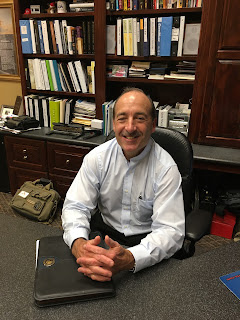Leather Lingo from Palliser Furniture
Shared from our friends at Palliser Furniture
Everything you need to know about the language of leather
Offering a luxurious look with the strength to withstand years of use while still looking beautiful—leather is a natural choice for upholstered seating. Today’s leather furnishings are offered in a wide array of fashionable colors and grades designed to fit everyone’s lifestyle and budget.
Here’s a glossary of terms to help you as you shop:
Aniline
A process of coloring a hide with transparent aniline dyes that penetrate the leather.
Bi-Cast
The application of a polyurethane surface coating on a split or top grain leather.
Buffed or Polished
Top grain leather that has been mechanically sanded to remove surface imperfections.
Corrected Grain
Leather whose outside skin is processed and sanded to minimize flaws and then pigmented and embossed.
Distressed
Process used to create an effect resembling a worn look or an aged appearance.
Embossing
A process that alters the natural grain of the leather by using etching, engraving or electrotyped plates to create a very uniform grain pattern.
Fat Wrinkle
A natural wrinkle in the leather’s grain, unique to each hide, normally visible only in full grain leathers.
Finishing
Any post-tanning treatment such as dyeing, rolling, spraying, antiquing, waxing, buffing, embossing, or glazing.
Full Grain
Leather in which only the hair has been removed while the grain remains in its original state.
Glazed Finish
A leather surface polished to a high luster.
Gloss Finish
Higher shine/sheen finish, usually with enhanced texture added.
Grain
Pattern characterized by the pores unique to the animal and visible on the outer surface of a hide after the hair has been removed.
Hand
Term used to describe the softness or feel of leather when touched with your hand.
Hides
Skins from cattle for leather furniture.
Matte Finish
Low-gloss finish usually with enhanced texture added.
Naked Leather
Tanned, aniline dyed leather without a protective top coat. Commonly referred to as pure aniline.
Natural Grain
Leather in which the grain has not been altered in any way. The natural appearance of the grain is predominant showing visibly healed scares, fat wrinkles, insect bites, etc.
Nubuck
Top grain, aniline-dyed leather that has been buffed to create a suede like nap effect.
Patina
A luster that develops with time and use.
Pigmented
Leather surface that is coated with color pigments.
Pull-up
When leather is pulled, the oils or the waxes in the leather cause the color to dissipate and become lighter.
Pure Aniline
A leather that is dyed but has little or no protective top coating to prevent it from cracking, staining or crocking.
Sauvage
A two-toned effect utilizing two different colors of dye which adds depth and character to the leather.
Semi Aniline
Leather that has been aniline dyed throughout, then protected by a clear or pigmented finish coating creating a more consistent color than pure aniline leathers. Natural markings may be visible.
Split
The middle or bottom layer of the hide used in areas that are not under any stress, such as backs or sides of sofas.
Split Grain
The underneath layer of a hide which has been split off when the top grain is separated. If finished, the split is heavily embossed and surface treated.
Suede
Leather produced from the underneath layer/lower split of a hide processed for a velvet-like nap effect. Suede does not have the same durability characteristics as top grain leathers.
Tanning
The process of turning raw hides into leather.
Top Grain
The uppermost layer of the skin or hide, the top grain of the hide is stronger and more flexible and may be either full grain or embossed grain.
http://www.blog.palliser.com/leather-lingo/




Comments
Post a Comment